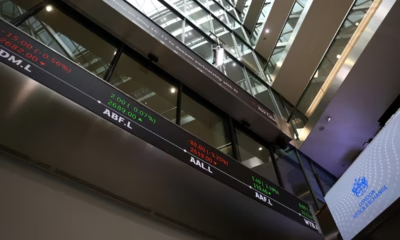Business
London Rental Values Rise in Prime Zones Despite Budget Uncertainty

Introduction
Rental prices in London’s prime districts have risen again despite ongoing budget uncertainty and slower economic growth. Data from Knight Frank and the Office for National Statistics shows that average rents in high-demand areas such as Kensington, Mayfair, and Canary Wharf increased by 2.7 percent in September compared with the previous quarter. The rise comes as tenants face tighter budgets and landlords navigate a complex environment of higher borrowing costs and potential tax reforms. Analysts say the increase reflects an acute shortage of rental properties and resilient demand from professionals and international tenants returning to the capital.
The pattern contrasts with the wider UK housing market, where elevated mortgage rates have cooled buyer activity. In London, limited supply and a renewed appetite for high-quality homes have kept rents moving higher. Property agents report that demand for well-located, energy-efficient units continues to exceed available stock, even as broader consumer confidence remains subdued.
Policy Context
The government’s ongoing fiscal discussions have added uncertainty for property investors and landlords. Treasury officials are reviewing potential adjustments to rental income taxation and capital gains relief ahead of the Autumn Statement. Industry groups warn that any additional tax burden could discourage investment in rental housing at a time when supply shortages are already critical.
The Bank of England’s decision to keep its policy rate at 5.25 percent has compounded the problem. Higher financing costs have slowed new housing development and deterred small landlords from expanding their portfolios. ONS data shows housing starts in London fell 9 percent in the third quarter compared with last year, with developers citing higher construction and labor costs.
Policymakers are under pressure to address affordability concerns. The Department for Levelling Up, Housing and Communities has pledged to accelerate affordable housing schemes, but implementation delays mean little near-term relief. Economists warn that unless housing supply improves substantially, rental inflation will remain elevated through next year.
Market Response
The private rental sector remains one of the tightest parts of London’s housing market. Letting agents report strong competition for new listings, with many properties receiving multiple offers within days. In Westminster and Knightsbridge, average one-bedroom rents now exceed £2,600 per month, while two-bedroom apartments in Canary Wharf average around £3,400.
Investor sentiment remains cautiously optimistic. Overseas buyers and institutional funds continue to favor London’s high-end property market, viewing it as a stable hedge against global volatility. A weaker pound has also supported foreign demand. However, analysts note that persistent rent increases could soon strain affordability. The average London renter now spends more than 40 percent of disposable income on housing, one of the highest ratios in Europe.
According to ONS figures, real wage growth remains modest at 1.2 percent after inflation, meaning tenants’ budgets are under pressure even as rents continue to climb. This imbalance between income growth and housing costs is expected to weigh on household consumption into 2026.
Expert View
Analysts at Savills and JLL agree that London’s rental market is facing structural undersupply rather than short-term volatility. They estimate that the capital needs about 60,000 new rental units per year to meet projected demand, yet only half that number is being delivered. Some smaller landlords are leaving the market due to compliance costs and energy-efficiency regulations, further reducing stock.
Economists argue that the next phase of policy should focus on incentivizing private investment in the rental sector through planning reform and targeted tax relief. Without such measures, rental pressures are likely to persist, particularly in central boroughs where land constraints limit new development.
Future Outlook
Rental growth is expected to remain steady but slower over the next twelve months. Analysts forecast a 3 to 4 percent annual increase in prime rents for 2026, supported by continued demand from professionals and international residents. The Bank of England’s current policy stance means mortgage rates will likely stay high into next year, keeping many would-be buyers in the rental market.
Developers and local councils are exploring modular construction and mixed-tenure projects to accelerate supply, but results will take time to materialize. For now, the capital’s rental sector is defined by scarcity and resilience. Tenants face another year of elevated costs, while landlords benefit from stable yields amid ongoing policy uncertainty.
Conclusion
London’s prime rental market continues to defy broader housing trends, rising even as the economy slows. Strong demand, limited supply, and fiscal uncertainty have combined to keep rents near record highs. Policymakers now face the challenge of improving affordability without discouraging investment. Unless new housing projects accelerate and fiscal clarity returns, London renters will remain caught between high demand and constrained supply well into 2026



















